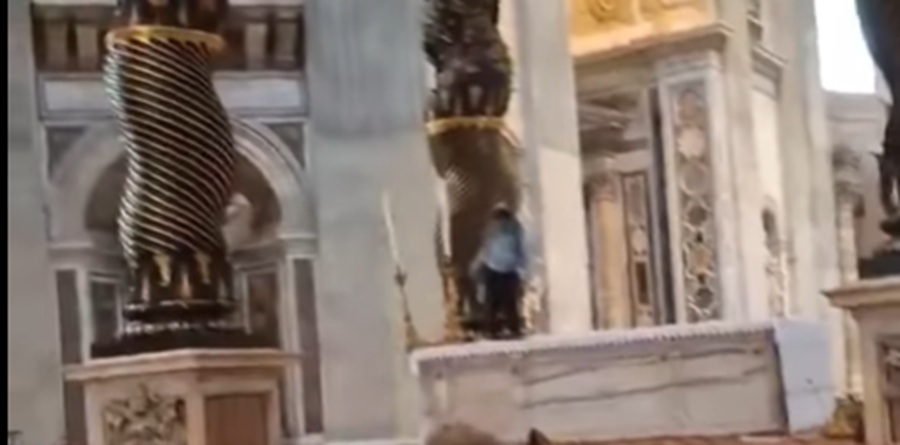A 40-year-old man of Romanian nationality desecrated the main altar of St. Peter’s Basilica in the Vatican by climbing onto it and toppling six bronze candelabras, each dating back to 1865 and valued at €30,000. He then began removing the linen altar cloth before being swiftly detained by Vatican security personnel.
Videos of the incident circulated widely on social media despite security efforts to shield the scene from public view. The basilica’s alarm was triggered as soon as the man stepped onto the altar, prompting an immediate response from five members of the Vatican Gendarmerie. The damaged candelabras were recovered, inspected, and restored to their original positions.
Authorities have identified and charged the suspect with causing damage. While he has since been released, officials are reportedly considering barring him from residing in Rome.
The director of the Holy See Press Office, Matteo Bruni, described the incident as involving “a person with a serious mental disability” who was taken into custody before being placed at the disposal of Italian authorities.
This is not the first such act of vandalism at St. Peter’s Basilica. In 2019, another individual climbed onto the altar under the baldachin and threw a candelabra to the ground. More recently, in 2023, a man was detained after undressing at the high altar.
The Code of Canon Law, which governs the Catholic Church, states in canon 1210 that sacred places such as St. Peter’s Basilica should be used solely for worship, piety, or religious purposes, and that anything contrary to the holiness of the site is forbidden.
These recurring incidents have raised concerns about security at one of the world’s most visited religious sites. Vatican authorities are reportedly increasing measures ahead of the upcoming Jubilee celebrations to prevent further disruptions.





